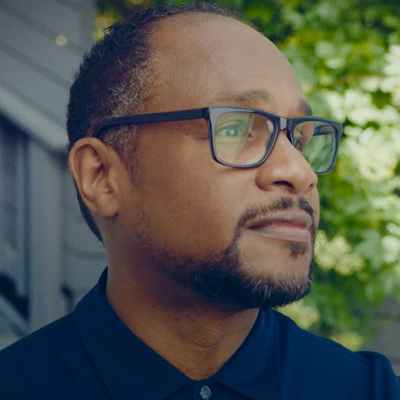
This post was first published on The ASCO Post, October 10, 2019. It has been edited for content. The ASCO Post, in partnership with the American Society of Clinical Oncology (ASCO), communicates news of evidence-based multidisciplinary cancer care to a broad audience of oncology professionals and ASCO members.
Mr. McLaurin is the coordinator of cancer survivorship programs at the Samuel Oschin Comprehensive Cancer Institute at Cedars-Sinai Medical Center in Los Angeles.
Let’s face it: men don’t go to the doctor as often as we should. At least that has been my experience. I felt compelled to finally make an appointment with my primary care physician after I began working as a research assistant at the Smidt Heart Institute at Cedars-Sinai in 2014, as it felt hypocritical to encourage other people to take care of their health while neglecting mine.
A physical examination found that my prostate was enlarged, but that didn’t immediately raise any alarms. I was just 46 at the time, and cancer wasn’t on my radar. No one in my immediate family or inner circle had been diagnosed with cancer, so it wasn’t a disease I had ever thought much about. I wasn’t even that concerned when a prostate-specific antigen (PSA) test showed that my PSA level was high, and my physician recommended I make an appointment with a urologist for a prostate biopsy.
It wasn’t until I was awakened early one morning by a phone call from my urologist who informed me that I had prostate cancer that I started to panic. It took me a few seconds to comprehend what he was saying. He then ticked off a list of things I had to do. First and foremost, he said, find a surgical oncologist and make an appointment to have the cancer removed.
Coming to terms with cancer
The diagnosis left me reeling, and I wondered how long I had to live. I felt completely helpless. After pulling myself together, I called the surgical oncologist that my urologist had recommended and made an appointment. During our meeting, he described how he would perform the surgery and explained the side effects I would likely experience, including temporary incontinence and erectile dysfunction. I was so anxious and stressed, I honestly couldn’t comprehend all that he said.
After doing some online research about prostate cancer, including how outcomes are worse for African American men, I scheduled the earliest surgical date I could get.
Coping with treatment side effects
Despite the warnings about the potential side effects from surgery, I was totally unprepared for its aftermath. I awoke after the operation with a urinary catheter, which remained inserted for 2 weeks. Continued urinary issues after the catheter was removed caused me to wear incontinence underwear, which was humiliating. But the worst was to come.
My oncologist said that the cancer, although early stage, was aggressive, and he recommended 37 rounds of adjuvant radiation therapy and injections of hormone therapy to reduce my levels of testosterone and decrease my risk of recurrence.
The radiation therapy left me so fatigued that I was unable to work for a year. The hormone therapy made me so emotional that touching television commercials brought me to tears. The treatment also caused frequent hot flashes, weight gain, and loss of muscle mass. I even started losing my hair, although I’m not sure why. The bottom line is, I was a mess and sure I was “circling the drain.”
Finding relief
Realizing I needed help, I sought the services of a social worker in the oncology department of my hospital. Within the first session with her, it felt like a giant weight had been lifted. She listened to me and validated my feelings in a way my oncologist had not. She suggested online support groups I might find helpful and recommended I join the hospital’s art therapy program for cancer survivors.
At first, I was skeptical because the program included all women—mostly breast cancer survivors—and I wasn’t sure how I would fit in. But I was so desperate to get better, emotionally and physically, that I decided to take the chance. I had no idea how drastically the program would change my life.
Living my best life
The women in my art therapy program taught me how to open up and share my feelings. The experience was exhilarating and freeing. I next joined a cancer support group traveling to India. There, I learned lessons of gratitude and the importance of giving back. When I returned home, I launched Men Actively Creating Healthy Outcomes (MACHO), an online resource to raise awareness about cancer risk and improve men’s overall health.
Today, I visit churches and health fairs and speak to African American men about the cancers that are especially devastating for them, including prostate, colorectal, and lung cancers. I also urge them to receive cancer screenings. Additionally, I started a cancer support breakfast for men to help connect survivors and provide a safe place where they can share their feelings and find fellowship.
My newfound advocacy led me to my current position as the coordinator of cancer survivorship programs at the Samuel Oschin Comprehensive Cancer Institute at Cedars-Sinai Medical Center in Los Angeles. Over the past 5 years, I’ve met the most wonderful, courageous, and generous people in the world. They have changed my life, and I hope I am making a difference in their lives as well.
This past April, I celebrated a year of being cancer-free, and I’m living my best life. I’m grateful for the wonderful care and support I received throughout my cancer journey, which has led me to a new life purpose. But more than that, I’m grateful I now get to help other survivors rebuild their lives and find their new purpose. Life doesn’t get any better than this.
